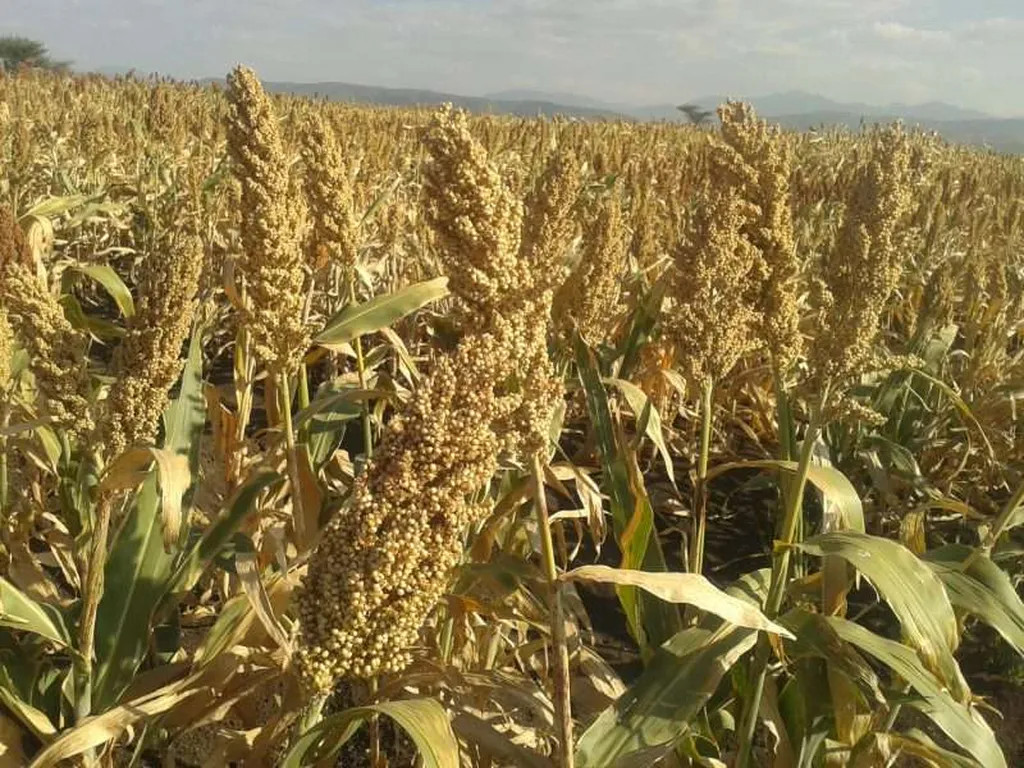In the sun-scorched landscapes of Senegal’s Djiffa Valley, a groundbreaking study is unlocking new possibilities for sorghum cultivation, with implications that could ripple through the energy sector. Led by Mekila Mbaikoubou of the Institut Tchadien de Recherche Agronomique pour le Développement (ITRAD), this research is not just about growing crops; it’s about revolutionizing how we approach agriculture in challenging environments.
The study, published in the Journal of Oasis Agriculture and Sustainable Development (translated as Journal of Desert Agriculture and Sustainable Development), delves into the effects of mineral fertilization and organic amendments on sorghum (Sorghum bicolor (L.) Moench) under saline stress conditions. The findings are nothing short of transformative. “The amendments based on fertilizers and biofertilizers improve the water status of the plants and promote the storage of chlorophyll pigments,” Mbaikoubou explains. This isn’t just scientific jargon; it’s a game-changer for farmers battling harsh, saline soils.
Sorghum, a drought-resistant crop, is a staple in many parts of the world, including Africa. Its grains are used for food, while the residues can be converted into bioenergy. The study’s focus on the CE 180-33 variety, introduced in the irrigated perimeters of the Djiffa Valley, highlights its potential for high yields even in saline conditions. The research employed a randomized complete block design with 18 elementary plots. These plots were treated with NPK 15-15-10 fertilizer at 150 kg/ha and various organic amendments—biofertilizer, peanut shells, manure, and household waste—each at 500 kg/ha. A control plot without any amendments was also included.
The results were striking. The physiological traits of the sorghum plants, such as transpiration rate, stomatal conductance, and chlorophyll content, all showed significant improvements with the use of fertilizers and biofertilizers. “The yields in grains and harvest residues were also significantly higher for the plots amended with fertilizers and biofertilizers,” Mbaikoubou notes. This means more food on the table and more biomass for energy production.
The implications for the energy sector are profound. Sorghum residues, often discarded, can be converted into biofuels, providing a renewable energy source. With improved yields and better plant health, the potential for bioenergy production increases. This research could pave the way for more sustainable and efficient agricultural practices, benefiting both farmers and the energy industry.
As we look to the future, the findings from this study offer a beacon of hope. They demonstrate that even in the face of saline stress, innovative agricultural practices can yield remarkable results. For the energy sector, this means a more reliable and sustainable source of bioenergy. For farmers, it means better yields and improved livelihoods. The ripple effects of this research could be felt far and wide, shaping the future of agriculture and energy production in arid and semi-arid regions.
In the words of Mbaikoubou, “This research is not just about growing crops; it’s about revolutionizing how we approach agriculture in challenging environments.” And indeed, the revolution has begun.

